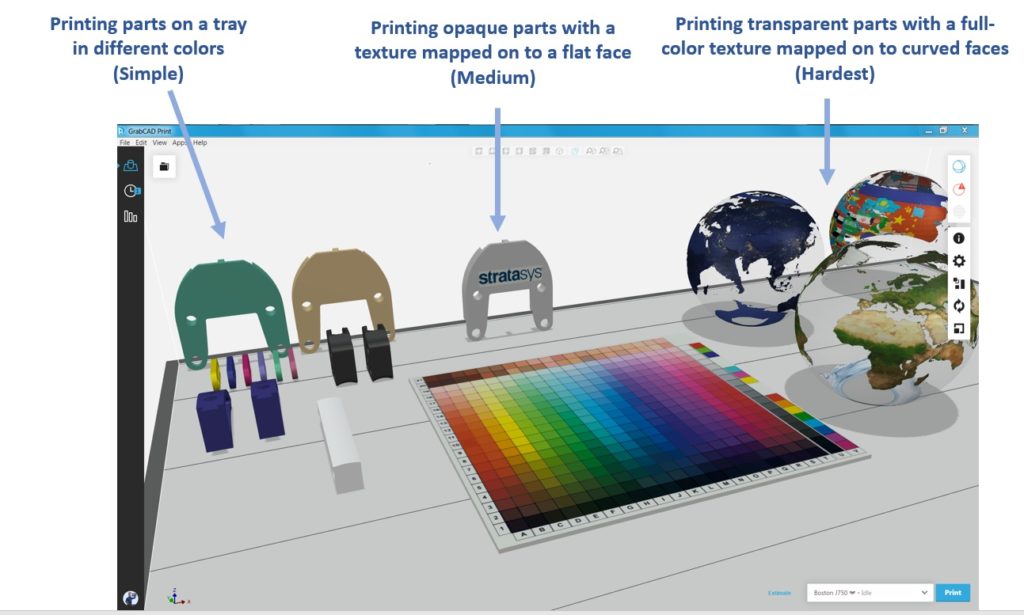Not a graphic artist? No worries. This tutorial is for you! Get the absolute most out of the multi-colour, and multi-material 3D printers such as the Stratasys J750. The many types of file multi-colour printer can accept how to manipulate colours in Photoshop, Rhino. etc, to get the full gradient texture effects that most colour printer users desire.
Step 1: Levels Of Colour Printing
PolyJet printers can print various parts of an assembly in multi-colours on the same tray. They also have the ability to import textures mapped onto flat or curved surfaces of those parts. Transparent parts can also be printed with half-transparent textures wrapped completely around them. However, each of those capabilities requires a corresponding increase in the skills and knowledge of the printer operator.
By mastering all three levels, you can create the most realistic and useful models for your customers.
To begin, let’s see what the difference is between files coming directly from your CAD system and generic STLs.
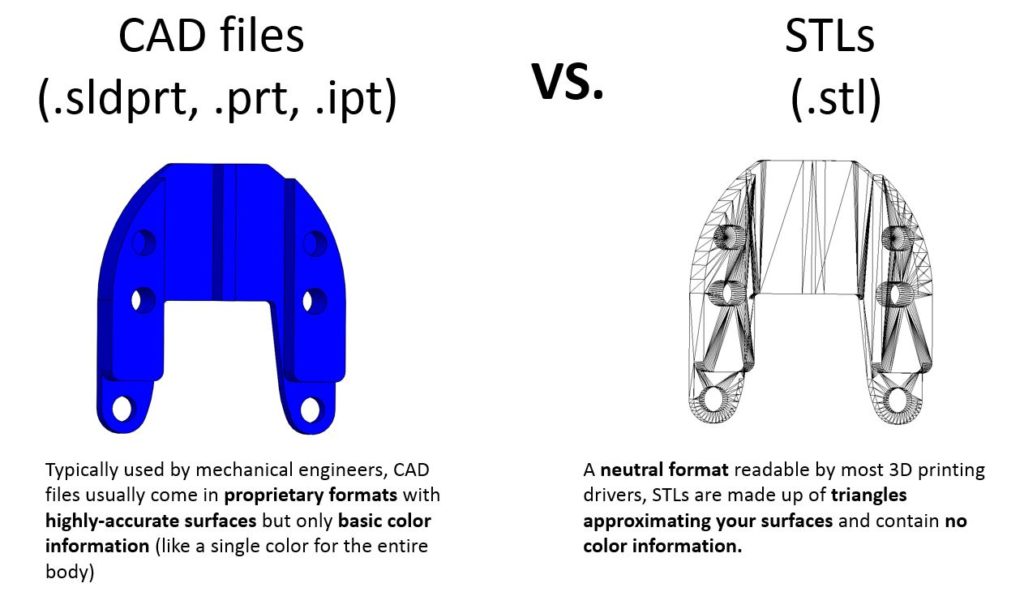
The most used engineering CAD systems are SOLIDWORKS, Inventor, CREO, and CATIA. All of these programs can export STLs.
At this time, we can define the difference between the two most common full-colour, full-texture formats which are VRMLs and OBJs.
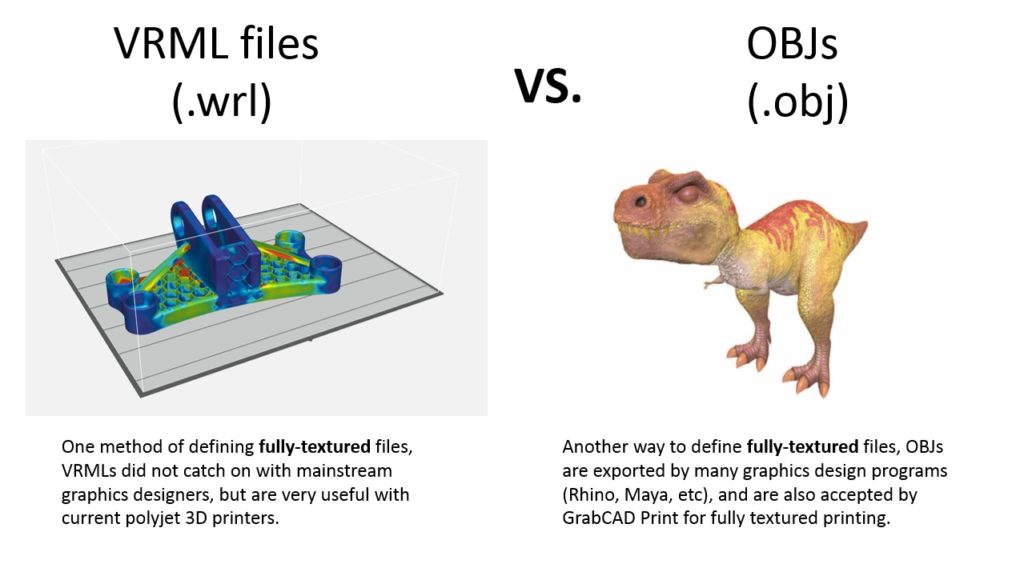
By understanding all three levels, users will be able to produce realistic and useful models for their customers.
Step 2: Definitions
General engineering CAD systems include SOLIDWORKS, Inventor, CREO, CATIA. These programs all have a way to export STLs. Below defines the difference between the two most commonly used full-colour, full texture formats; VRMLs and OBJs.
Now, you may be thinking to yourself, “why can’t we just export fully-textured CAD files from our CAD package and print those?” This can’t be done because mainstream CAD formats don’t restrain texture information when exporting their proprietary files.
If or when you choose to apply colours to CAD bodies and faces only, export a VRML from SOLIDWORKS brings those bodies and face colours into GrabCAD Print for printing on a Stratasys J750/Connex3. Any textures or decals are still lost such as in the example above. Sometimes, face colour is enough to capture simple intent. An example is when using coloured sunken text.
When printing with HP style printers, you can export .3MF files from SOLIDWORKS and have those face colours retained. Similarly, exporting VRMLs from a majority of CAD packages seems to strip out texture information, leaving just base part colours.
(However, one exception is FEA results from SOLIDWORKS Simulation. But if you do want to export the FEA results as full-coloured VRMLs and print them directly with GrabCAD Print, that will work as well.)
Let’s keep the focus on colour 3D printing skills from ‘simple’ to ‘medium’ by learning how to re-apply those missing textures onto flat faces for printing.
Step 3: Inserting 3D Parts Into Photoshop
Because textures do not export out of most CAD systems but DO export from Photoshop, export your shape as an STL from the CAD package and use Photoshop to apply the texture as a layer, then export a VRML to GrabCAD Print for printing.
The “Extended” version of Photoshop can do this. You can tell if you have the Extended version by opening Photoshop and looking for the “3D” tab at the top:

If you have access to Photoshop Extended, the next steps would be the following:
- Export the 3D shape from your CAD system as an STL (“Save as…STL”)
- Open Photoshop document at whatever size
- Click the 3D tab (displayed below)
- Create “new 3D layer from file” at whatever size and choose from your STL from step 1:

Your 3D part should be floating on a grid in Photoshop like this:
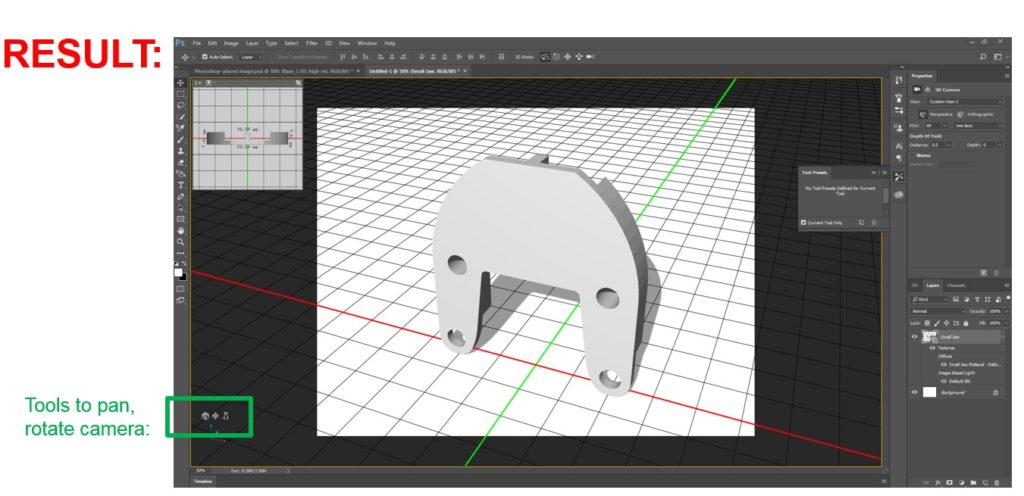
Rather than using the tools in the lower left to change your 3D orientation (green box above), another useful set of tools is in the top right in order to reset yourself to one of the standard Top, Front, or Right views (extremely useful to ensure your texture is parallel to one of the model’s flat faces):
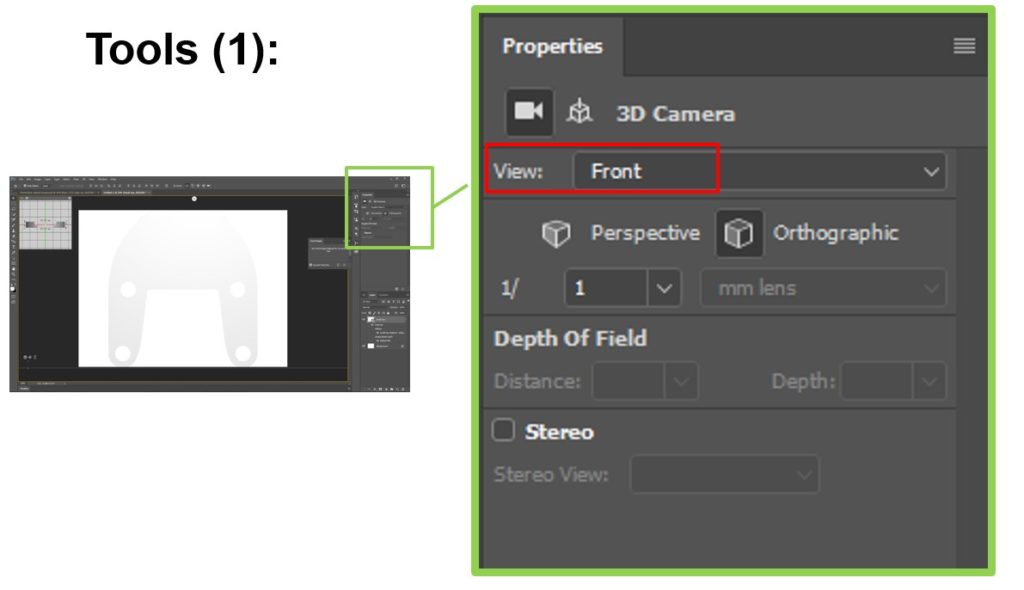
The last set of tools to have visible is the layers toolbar since all Photoshop commands only affect the active layer. At the start, 2 layers should be visible (the background and your 3D part), and what you will see after the next set of steps is 3 layers (after adding your texture image as a layer on top):
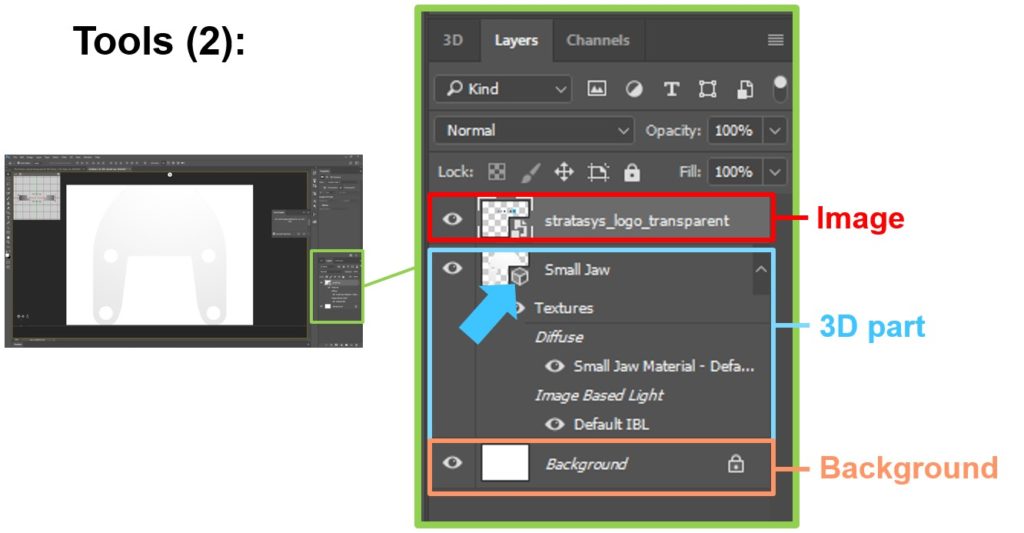
It is visible what layer is the 3D part by the small cube in the layer icon, pointed by the blue arrow above.
Now that we have gotten the 3D shape into Photoshop, next we’re going to apply our image as a texture.
Step 4: Inserting And Merging Your Image Texture Layer
The command to place the image is called “File..Place Embedded”
You will do the following:
- Begin the “Place Embedded” command
- Drage and resize your image to make it fit how you want
- Hit the grey checkmark in order to complete the placing of your image as a layer (check only shows once Place Embedded command has been started)
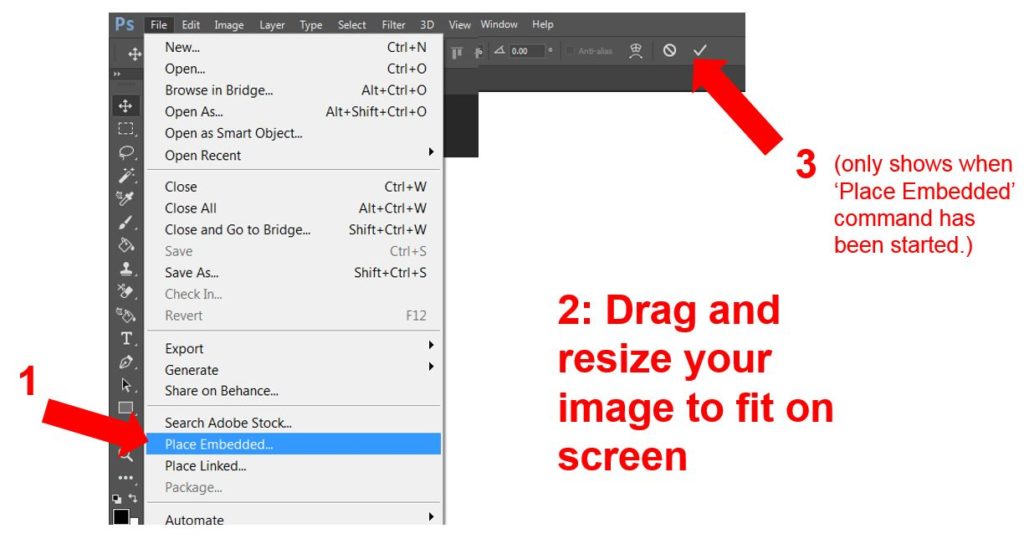
There should be 3 layers as shown in the previous step (background later, your 3D part layer, the texture later). What you should see if you rotate the 3D part is that the texture doesn’t stay flat, since it’s not yet connected to the 3D part yet:
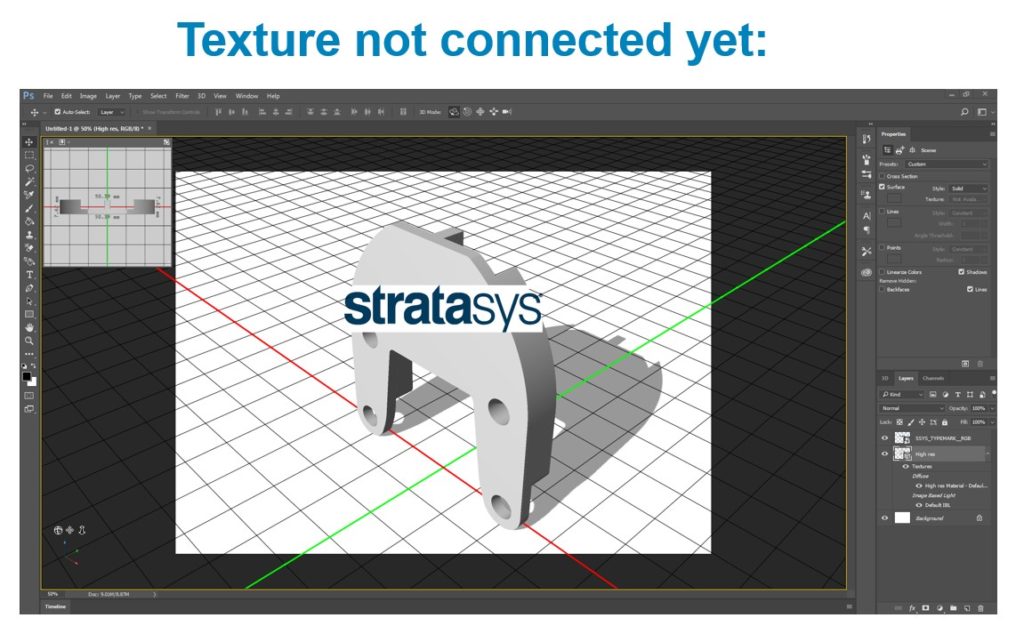
Keep in mind the three layers in the bottom right. Delete the background layer as it is not required. Then, ensure your model is lined up with the texture carefully using your standard views and zoom tools, and then right-click on your top-most, texture image layer and choose “merge down.” It should look like this:
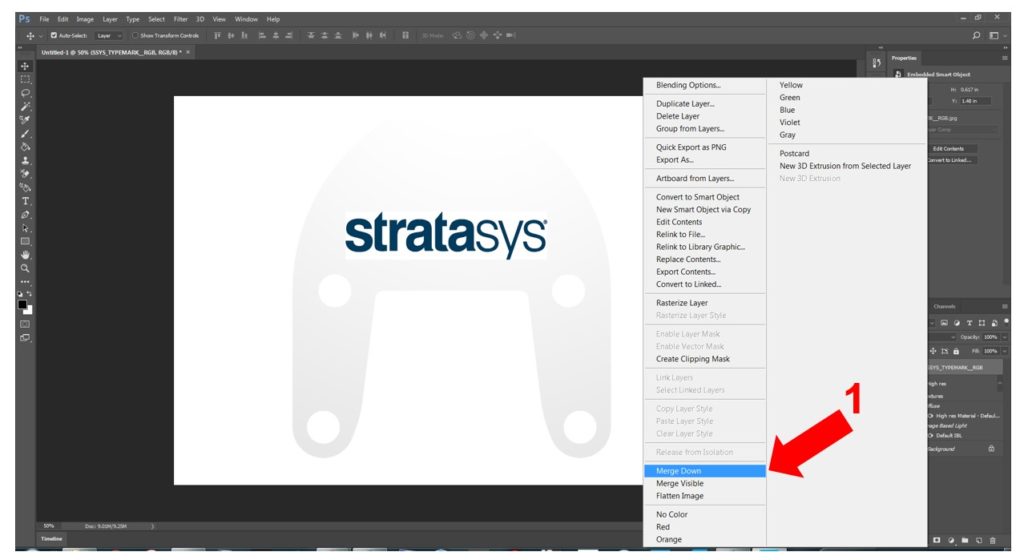
Now, only one layer should be visible with a texture that stays attached to your 3D part no matter how you rotate it:
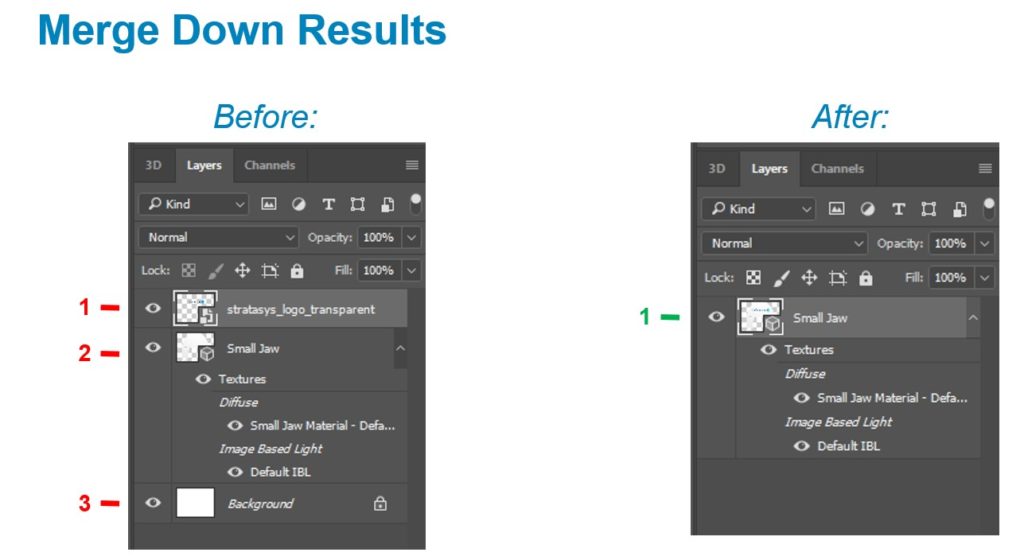
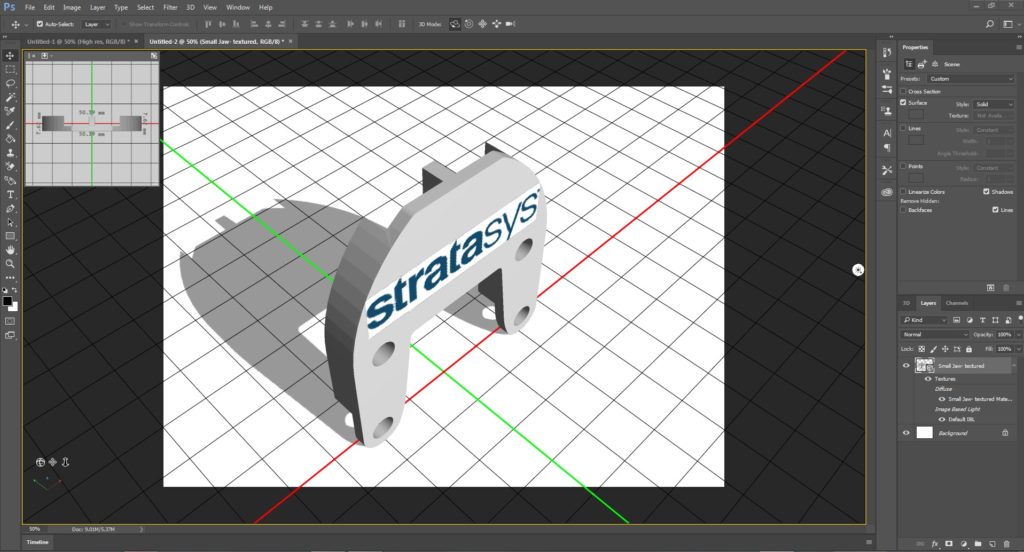
Next, we will view how to get that 3D printed part into your print preparation software.
Step 5: Exporting Textured VRML To GrabCAD Print
Right-click on the single remaining 3D layer and select the “Export 3D Layer” command:
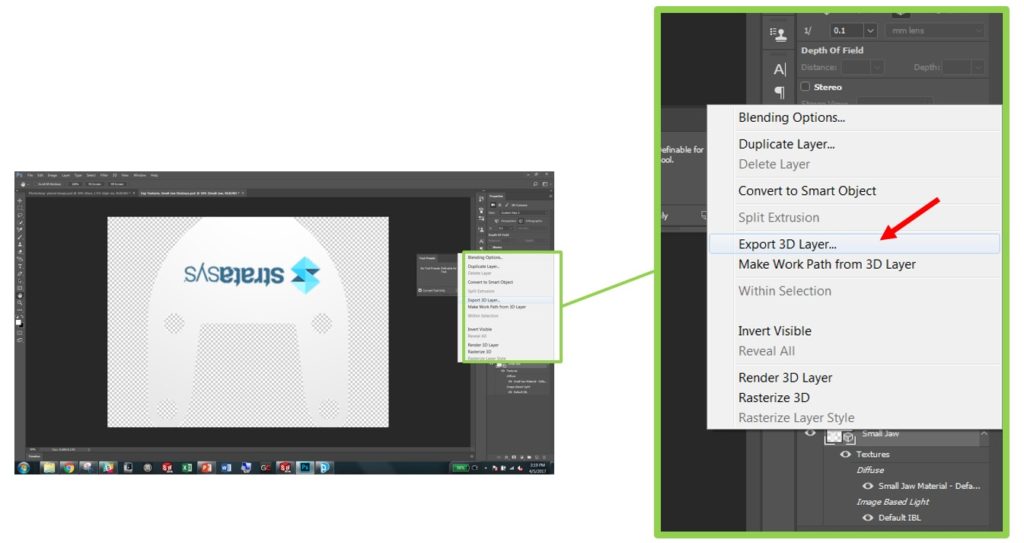
In this command, ensure to change the file type to “VRML” (red arrow 1) and change the texture format to “JPEG” or “BMP”
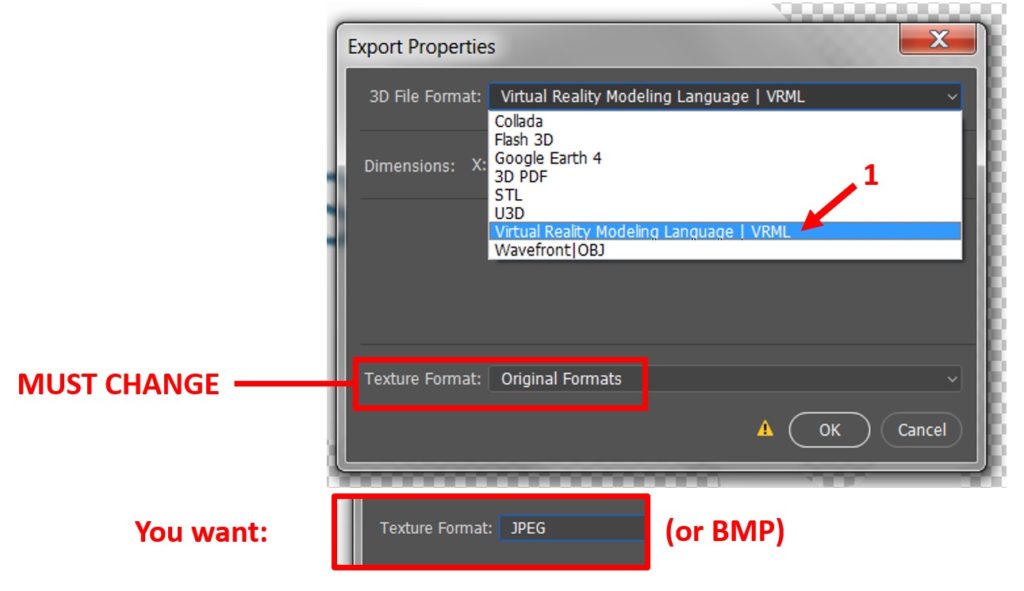
The finishing result of the command will be a VRML file (.wrl) saved on your computer, and a texture JPEG file or BMP saved right beside it. These two files must remain in the same folder. If it doesn’t stay in the same folder, the texture won’t be found while you’re reading the VRML into GrabCAD Print.
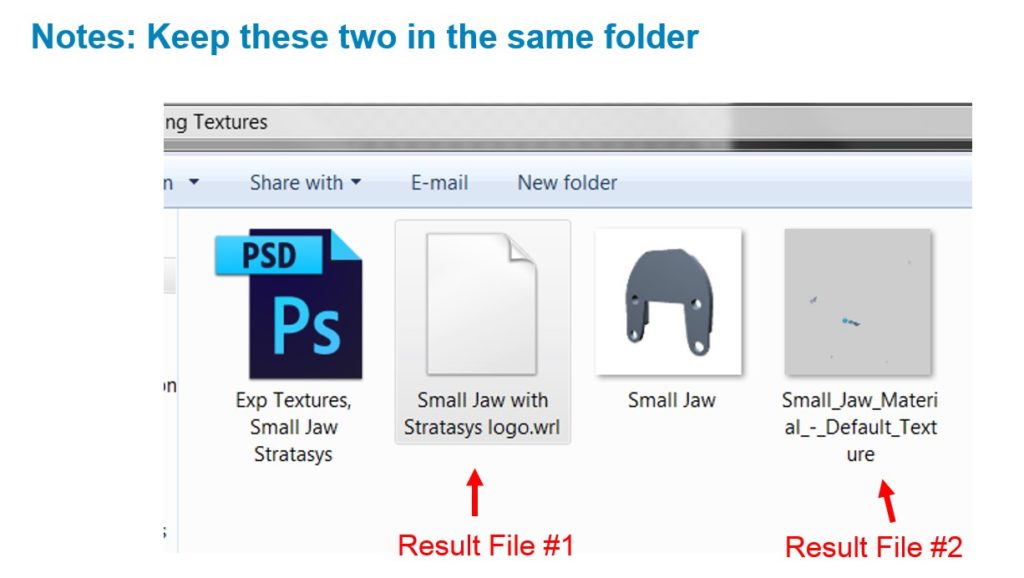
Following the step above, when importing that VRML file into a PolyJet tray inside of GrabCAD Print, you’ll notice the texture on your part, ready for printing.
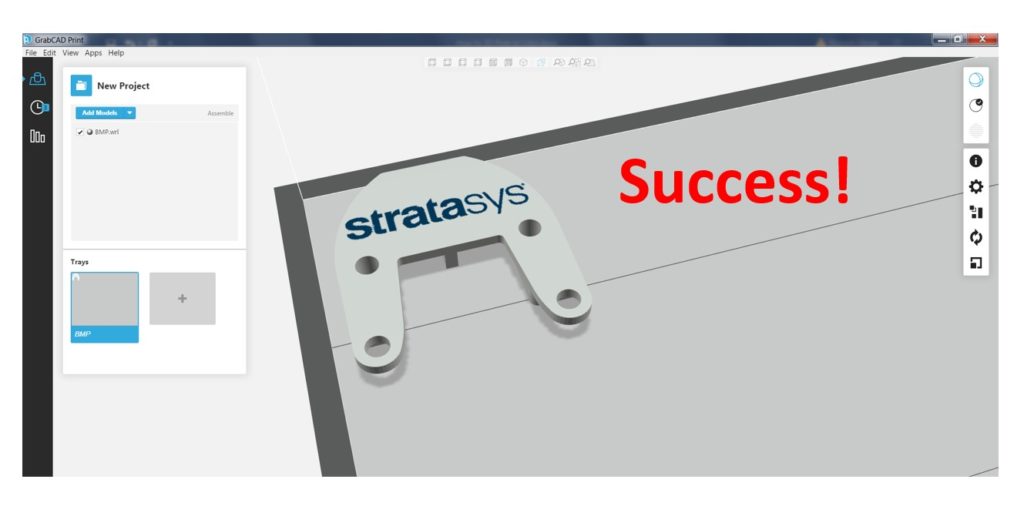
That part can be printed on a J750 and the colour texture will print as shown. Now let’s see what steps to take if your image did not emerge down correctly and how to make things more complicated.
Step 6: How To Make Things More Complex
When hitting the “merge down” command in Photoshop, you may have seen the texture become blurry and fragmented.
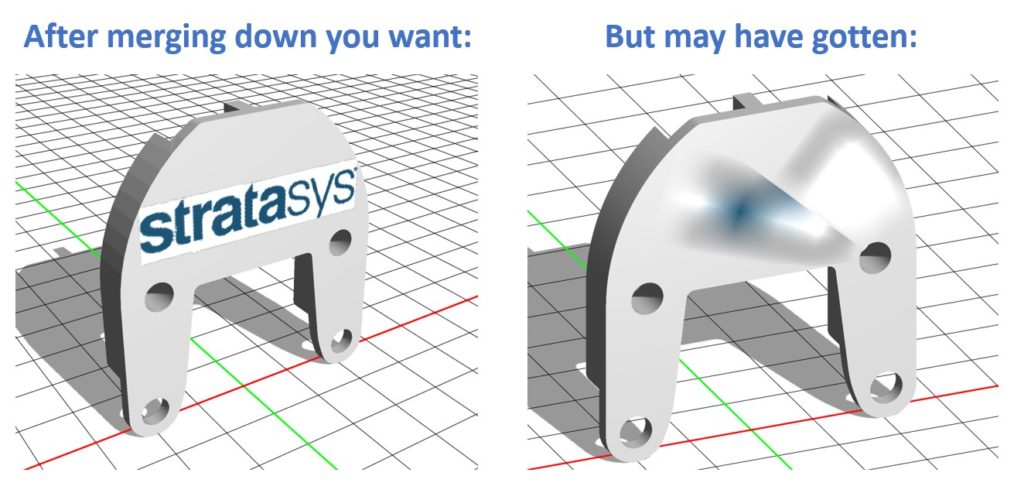
This is due to underlying methods of how textures map onto the faces of your model was not smooth or correct. This is called “UV mapping”, and if you take a look at the UV maps of each result, you can see why one could’ve worked better than the other:
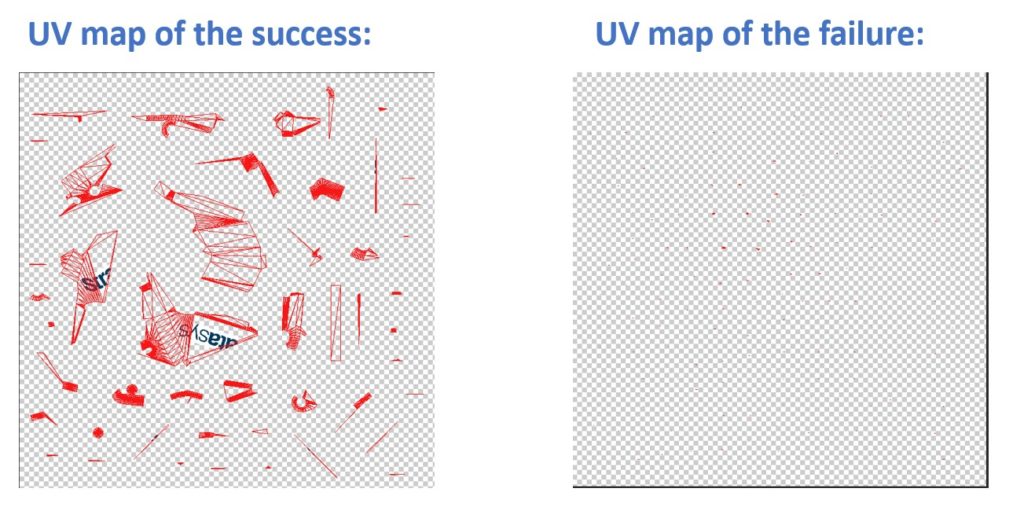
Step 7: Finished Result
The image below is to ensure a good thumbnail on the tutorial, and to show where we’ve come from and where you will be going next time!
